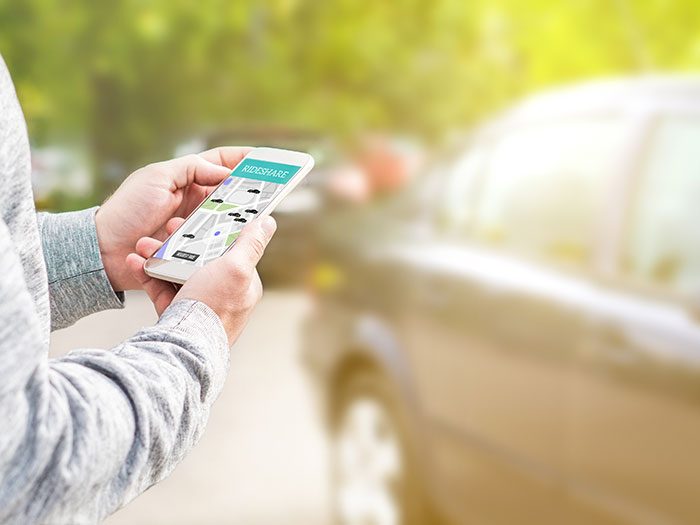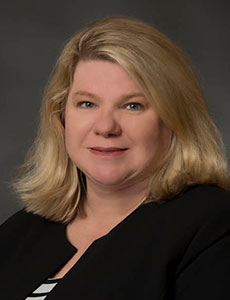Service Spotlight
Workers’ Comp Patient Transportation

Traditional transportation services meant to deliver injured workers to and from medical appointments may be at best inefficient, and at worst, antiquated. Both injured workers and payers want more control and transparency while also saving time and money.
Historically, third party providers are limited in flexibility. In this Q&A, Linda Colsen, vice president and national product leader at One Call, shares how the industry can soothe transportation pain points.
R&I: What’s wrong with traditional transportation in workers’ comp?
First and foremost is time, particularly when there has been an issue with a missed appointment. Odds are, you don’t learn about a missed appointment until well after it has been missed. The process to reschedule an appointment in itself can be a headache. When adding in the time factor, an injured worker could be looking at days or in some cases, weeks later than the original appointment.
The second factor is the cost. In the perfect scenario, you need two drivers: one to take the injured worker to their appointment and the second to take them home. Until recently, however, there
hasn’t been an effective solution to send a second driver to retrieve the injured worker from their appointment and transport them back to work or home. With traditional third-party transportation providers, payers end up spending a lot of dollars on wait time, which means paying a driver to sit in the parking lot while the injured worker is at their appointment.
Lastly is visibility, and specifically, a lack of visibility —knowing if the injured worker got picked up on time, if they overslept, if they’re on their way to the appointment and if they arrived on time.
R&I: How do these transportation challenges impact outcomes?
Without real-time visibility, delayed transportation may mean missed appointments, which means the injured worker doesn’t get the care they need. Rescheduling the appointment and another ride creates more logistical challenges for claims staff, case managers, injured workers and healthcare providers. Ultimately, missed appointments mean slower recovery and more stress for injured workers and higher costs for workers’ compensation payers. Transportation troubles leads to costly and subpar outcomes for everyone involved.
R&I: What can the industry do about it?
Technology has given us real-time, on-demand ride hailing services. For the average consumer, they offer more convenience and comfort for significantly less than a traditional cab. A real-time ride request reduces downtime because it can use drivers who are nearby. It also allows users to track their driver and cancel or reschedule a ride easily as well as log their ride history. We asked ourselves, ‘Why can’t we use this in workers’ comp?’
One Call decided to leverage this technology with the creation of RelayRIDE, which may be used for any injured worker needing transportation to medical appointments. Real-time visibility enabled by the RelayRIDE technology means the One Call team can monitor ‘live’ trips in progress and take steps to mitigate issues, such as driver cancellations, by quickly scheduling the trip with another driver. This active trip monitoring means injured workers receive the treatment they need quickly, which may result in a shorter claim life.
R&I: How does it work?
We partnered with Lyft in August 2016, originally utilizing their services to handle the more difficult, rush cases.
Over the course of the partnership, we have developed our proprietary web-based application, which connects directly to Lyft through an open application programming interface (API). This allows One Call to seamlessly utilize RelayRIDE to fulfill ambulatory transportation referrals if the request is in a Lyft coverage area.
Once a ride has been scheduled, One Call initiates a series of text messages to inform the injured worker of their transportation arrangements. They provide details about their upcoming ride such as driver identification, vehicle information and ride tracking. These text messages also enable injured workers to request a return ride with the press of a button on their phone. Wait time charges are eliminated for rides fulfilled through RelayRIDE as each leg of the trip is handled independently. At the end of their ride, they are able to provide instant feedback by rating their ride experience and driver.
One Call has a team dedicated to monitor rides in real-time through RelayRIDE. Through this active monitoring, our team is alerted to potential issues and can be proactive in addressing transportation issues that historically resulted in missed appointments. We will immediately notify the medical provider if an injured worker is a “no show” or if a late arrival is anticipated, which ultimately reduces the administrative burden on our customers’ to make multiple follow-up calls.
One Call decided to leverage this technology with the creation of RelayRIDE, which may be used for any injured worker needing transportation to medical appointments. Real-time visibility enabled by the RelayRIDE technology means the One Call team can monitor ‘live’ trips in progress and take steps to mitigate issues, such as driver cancellations, by quickly scheduling the trip with another driver. This active trip monitoring means injured workers receive the treatment they need quickly, which may result in a shorter claim life.
R&I: Have you seen any benefits from this program yet?
Lyft drivers have provided more than 100,000 “rush” rides this year. These are rides for non-emergent ambulatory appointments.
For us, visibility and transparency are the biggest benefits. Claims managers and nurses can see active rides and ride history through the web portal. They know right away if a driver didn’t show or is delayed. They can act immediately to either arrange a new ride or to reschedule the appointment. They’ll know if a patient missed an appointment and can reach out to them sooner rather than later. It removes some decision-making steps for the patient and cuts out some of the cost and liability of using a traditional transportation service.
R&I: What are other key benefits of using a modern ride-sharing service?
By helping patients keep their scheduled appointments, it can prevent expensive emergency room visits. The system can also track appointment history and mileage for reimbursement purposes. The transparency and accountability components may also reduce likelihood of fraud.
R&I: What about from the patient’s perspective?
Approximately 98 percent of American adults have internet access. This program is reaching patients where they are at that moment and creating a seamless experience for them; they can request, track, or cancel a ride and see their history through the online dashboard. If they don’t want to log on and schedule a ride themselves, they can text “N” to our dispatchers who will send a driver for them.
The program will also send text reminders to patients 20 minutes before their driver is set to arrive, so they can be ready to go.
R&I: Are there other ways that technology can address challenges in worker’ comp?
Live video conferencing is increasingly playing a role in workers’ comp. Most of the conversation is centered on telemedicine —connecting doctors and patients when in-office visits aren’t feasible. But we’re applying video consultation to a different challenge: language barriers. Patients with Limited English Proficiency (LEP) may struggle to communicate with their medical provider, and if they can’t understand their treatment plan they are far less likely to stay engaged in their recovery.
RelayTRANSLATE is our technology-enabled video interpretation solution that is part of a broader program we’re developing called RelaySOLUTIONS, which also includes RelayRIDE. Through RelayTRANSLATE, the injured worker can request on-demand interpretation in their chosen native language, and the platform will connect them with a live person who can interpret for them via video. This is absolutely critical to achieve better outcomes for patients. &











